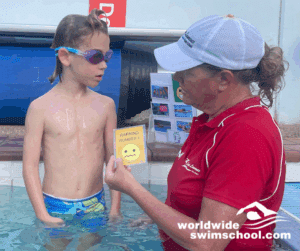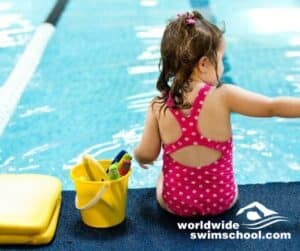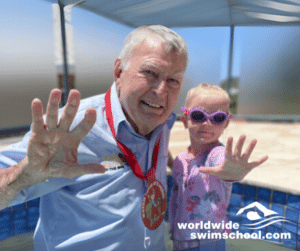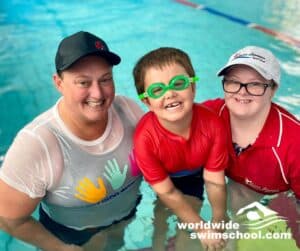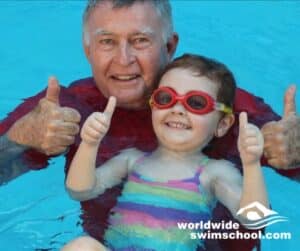Backstroke is perhaps the easiest and fastest stroke to teach because it doesn’t require swimmers to learn complex breathing techniques. Once children can comfortably float on their back, it is very easy to build in the kick and follow the progression by introducing the arm strokes.
Backstroke is a versatile stroke which can be used for safety, during recreation and for competitive sports. We should make note that for some timid beginner swimmers, learning to swim backstroke can be a challenge as they often feel insecure or uncomfortable while floating on their back. Moreover, we will discuss common faults in backstroke and how to prevent them.
Common Faults in Backstroke
Overall, when swimming backstroke, it is important to maintain a streamline body position with the head back and chest up. In addition, swimmers should maintain a continuous kicking action with a smooth arm action. Similarly, a relaxed straight arm recovery is encouraged with the pinkie finger entering the water first.
After that, follows an accelerated rotation of the hand which finishes facing down. Overall, mastering this catch and push phase in backstroke is essential for efficient propulsion. Having flexible ankles will also help in mastering proficient backstroke kick.
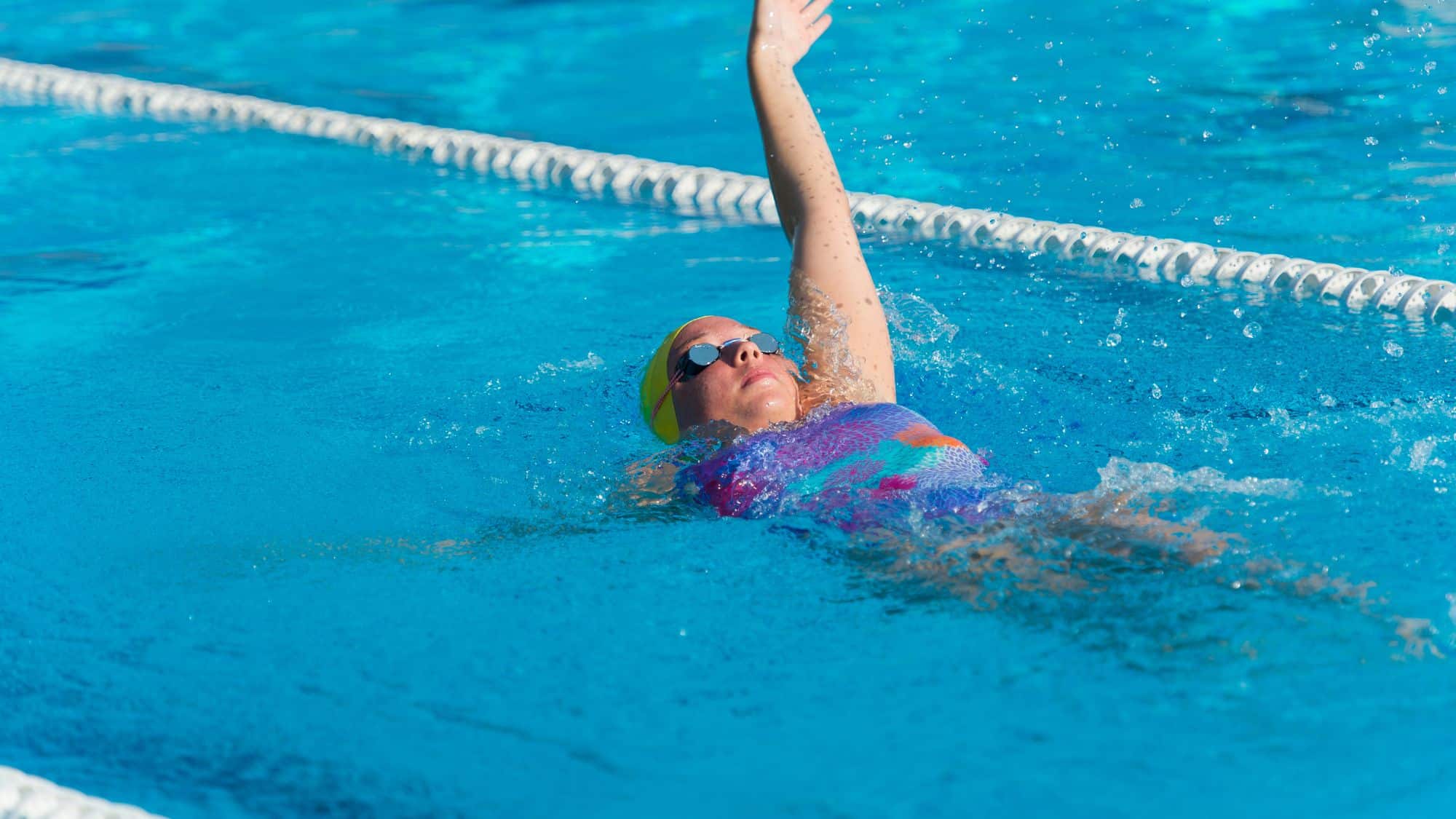
Body and Head Position
In backstroke the body rotates but the head remains still. Therefore, having balanced actions which mirror the left and right side will be crucial for efficiently in the stroke. Swimmers should be encouraged to breathe naturally and not hold their breath while they swim backstroke. In addition, more advanced swimmers can be encouraged to breathe in on one arm and out on the other. Simple instructions with good visual demonstrations work best when teaching backstroke. Therefore, Laurie avoids using complex language that talks about making angles or times as this only confuses the children.
Common faults in backstroke:
- Knees above water during the kick
- Feet out of the water during the kick
- Holding the breath
- Head up looking at the feet
- Incorrect entry where arm doesn’t brush ear
- Bent arm recovery
- Leading with the elbow in the pull
- Not holding the water in the pull
Overall, mastering this catch and push phase in backstroke is essential for efficient propulsion.
Correcting Faults in Backstroke
In addition, land drill can be very useful in teaching swimming and correcting faults. It also makes it much easier for the deck teacher or coach to physically manipulate and show swimmers what they want.
When using land drill make sure that the swimmers are spread out evenly and given enough space so that you can move among them easily to give them individual attention.
For example, in the table below, we outline some easy techniques or drills that swimming teachers or coaches can use to correct these faults. This, for instance, will help to make children more proficient at backstroke swimming.
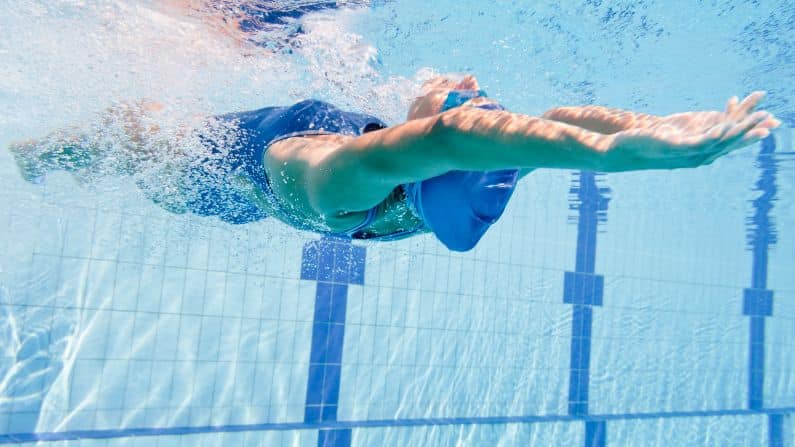
Tips to Correct the Fault
Fault: Knees above water during the kick/ feet out of the water in the kick
- Place your hands over the knees as the swimmer passes you (if teacher in the water)
- Kick with a board over the knees
- Seated ledge or deck kick, with legs straight
- Coach gives hand signals from deck (pushing your hand to the ground representing underwater)
- Reinforce the importance of kicking with toes pointed with loose ankles
- Use keywords ‘fast little kicks, knees and toes underwater’
Fault: Holding the breath
- Identity breath holding early in the teaching stage
- Encourage children to breathe in on one arm and out on the other
Fault: Head up looking at the feet
- Use simple key words ‘head back, tummy up’
- Revise kicking with a board and with hands by the side
- Land drill, lie on the group to establish correct head position
- Balance cup of water on forehead attempt to kick or drill short distances
Fault: Incorrect entry where arm doesn’t brush ear
- Land drill revising straight arm to brush the ear
- Staggered arm 6 kicks and change drill
- 6 kicks lift and pull drill, isolating one arm at a time
- Use key words ‘brush the ear’
- Give good visual demonstrations
Fault: Bent arm recovery
- Land drill revising straight arm
- Physically manipulate each swimmer each arm, lock the elbow to straighten the arm
- Give good visual demonstrations
- Encourage homework. Children look in the mirror and watch their straight arm recovery
Fault: Leading with the elbow in the pull
- Revise feel of the water, emphasis feeling the water pressure on the hand
- Beginner backstroke start with a straight arm pull, where the child feels the water with the hand and rotates the hand over at the leg
- For advanced backstroke encourage swimmers to go deeper into the catch, before bending the elbow for an accelerated thrust
Fault: Not holding the water in the pull
- Revise feel of the water, emphasis feeling the water pressure on the hand
- Revise 6 kicks change drill so that swimmers are focusing more on an aggressive underwater pull
- Perhaps the best drill to teacher feel of the water and bent elbow pull is double arm backstroke
- 6 kicks double arm pull, 6 kicks recover
Join our community for free to keep up to date on offers, new releases and more.
Swim Schools get your staff up-skilled on backstroke and more with the Swim School Hub.

